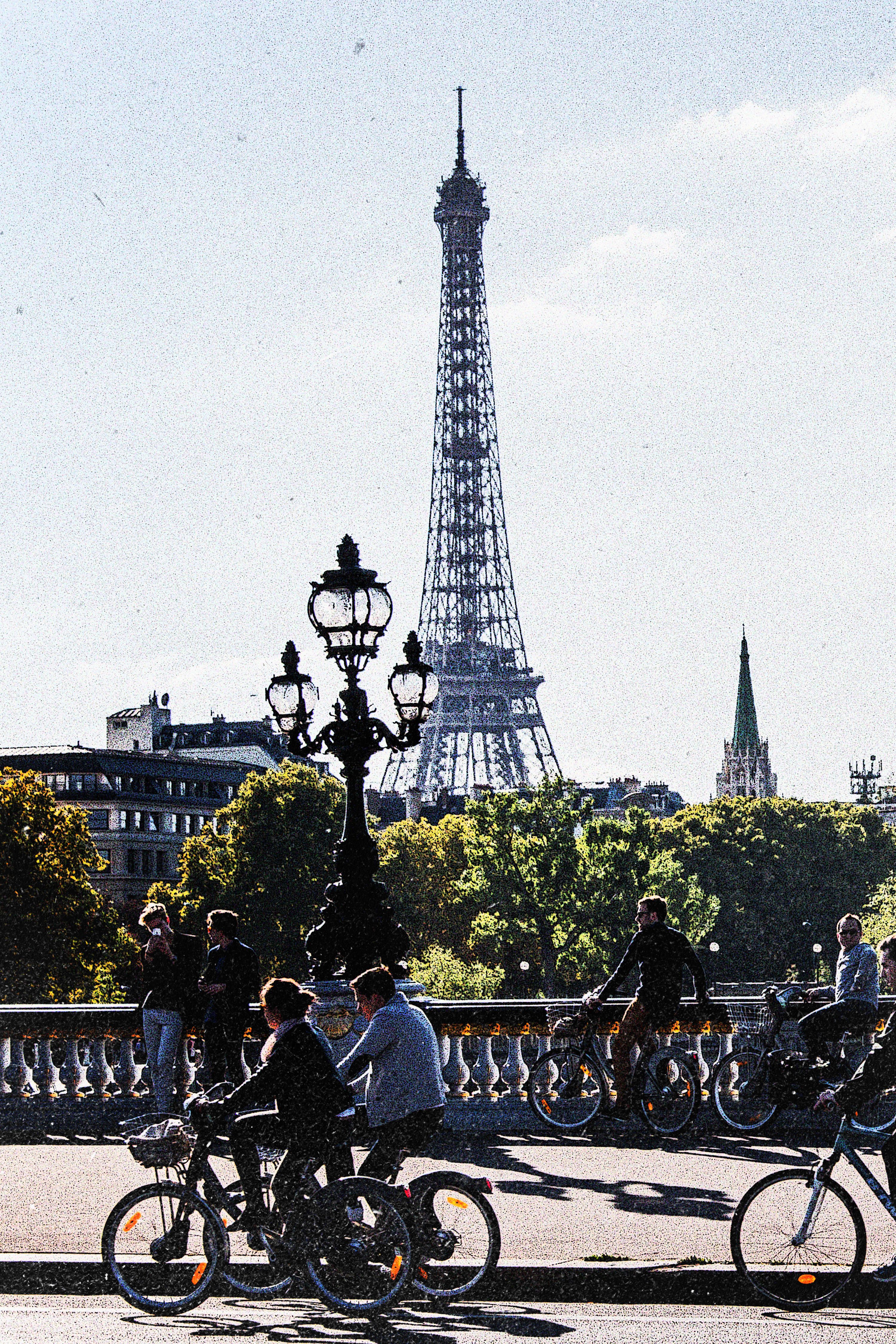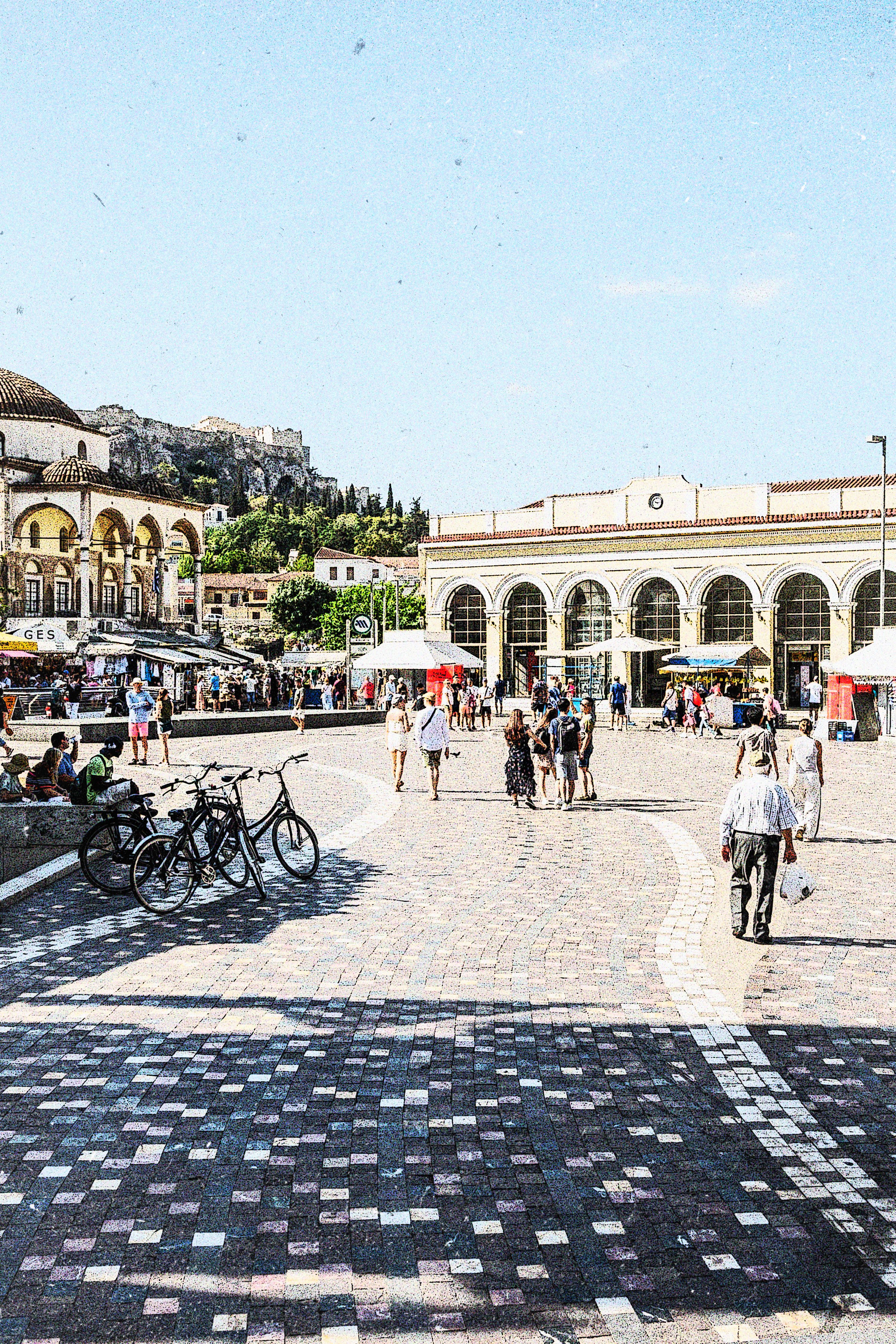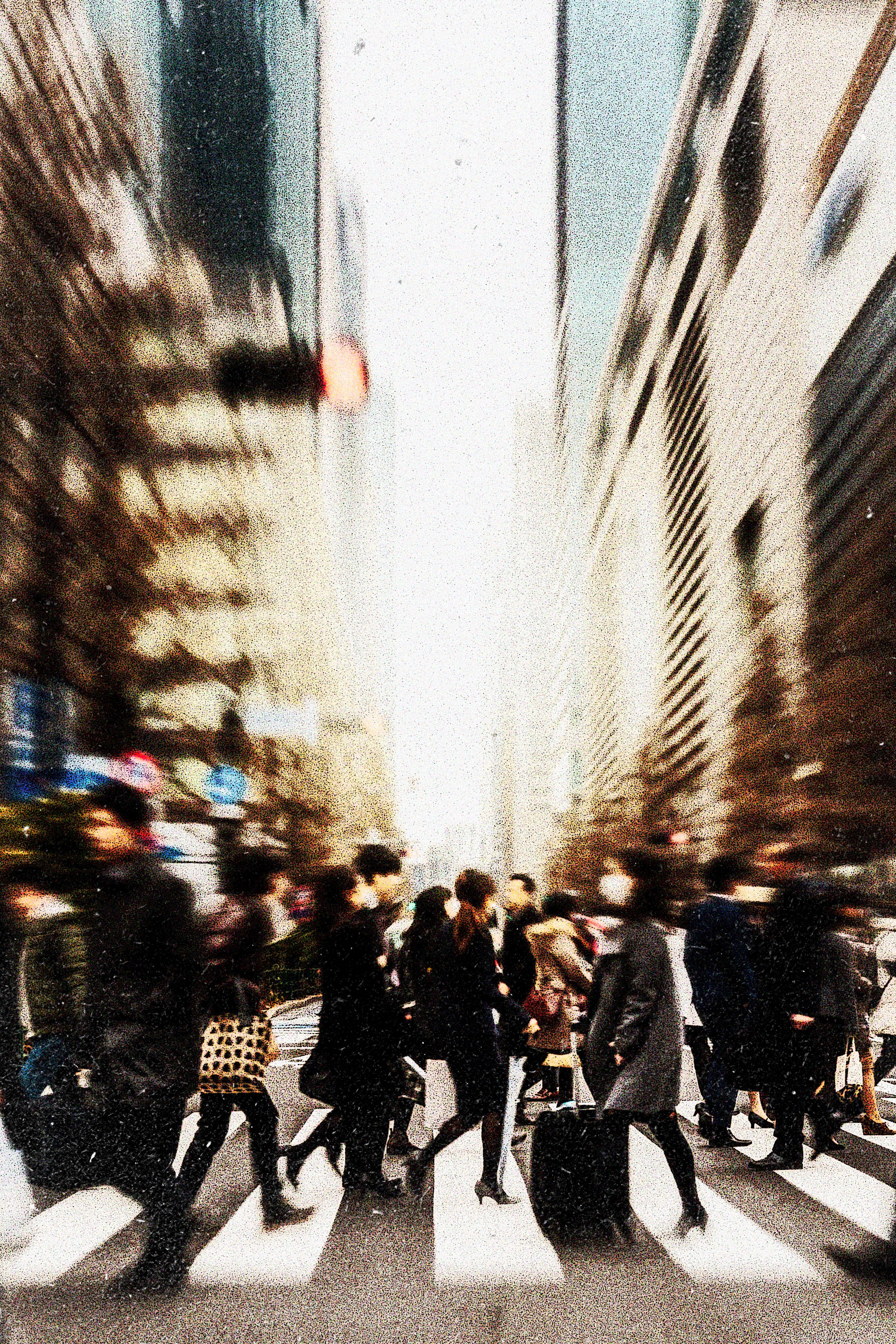Paris: The New Garden City
How the French capital is transforming its streets, squares, and public spaces to adapt to climate change and improve everyday life — an interview with Paris Deputy Mayor Christophe Najdovski

In recent years, the City of Paris has pursued an ambitious project aimed at strengthening and reintroducing nature into the urban landscape. This is a new vision, going beyond simply increasing green spaces. How did this shift in perspective come about?
"I believe that all major cities, especially large metropolitan areas, are facing the same challenges: dealing with the consequences of climate change and improving urban quality of life. After the pandemic, it became clear there was a strong social demand for easy and quick access to natural spaces—not outside the city, but where people actually live. That inspired us to make our city increasingly green. This goal was already at the heart of our 2020 election program: making nature more accessible to citizens. Our motto is to build what we call a 'garden city'.
We’re not just creating more parks and gardens like in the past—where streets, buildings, and workplaces were on one side, and recreational areas on the other. No. Our approach is to green the city wherever possible. That means creating new parks, expanding existing ones, but also bringing greenery to public space—especially streets, which for decades have been dominated by cars. We're trying to strike a new balance between space for motorized traffic and space for people, giving them access to nature in public spaces. This is part of our rebalancing policy: less space for cars, more space for people, pedestrians, and nature. That’s our objective.
To achieve it, we’re taking various actions. We’re greening streets, squares, rooftops, and walls—bringing green into the city wherever we can, especially on streets."
You’re describing an approach that reimagines the city in a completely different way from 20th-century urban planning. Can you give us some figures to understand the scale of the transformation?
"Take this winter, for example: we’re planting trees along about 120 streets in the city, totaling around 1,000 new trees—an average of 8–10 trees per street. It’s a systemic change. We did the same last year and the year before that. Every winter—from November to March, when trees are planted—we get close to 1,000 new trees.
We want to green the streets where people live, within 300 meters of their homes. That’s our rule: you should be able to see trees from your window. We’ve set a target of 30% tree canopy coverage across the city. It’s a medium-term goal—we’re aiming for 2040, not sooner. Right now, we’re at about 23–25%, so we haven’t reached the 30% mark yet, nor the 300-meter proximity rule for everyone. But this goal is crucial, especially in light of future heatwaves. Even today, we need to cool down the streets and tackle the 'urban heat island' effect. Our approach is to bring nature to all neighborhoods, particularly the most disadvantaged. Many people can’t afford a second home outside the city, so we must ensure they have access to nature where they live.
We’re treating streets as real public infrastructure. In a 'garden city', you have 'garden streets'. A street turned into a garden becomes a new public space where people can live their lives—put in benches, relax, let children play. We're imagining a new approach to public space: not just a place to move through as quickly as possible, but a place to meet. That’s the very definition of a city: a shared space for many people. If we only live in our cars, never meeting others, we lose something essential.
We're trying to rethink the function of streets: not just transit routes, but places to live and connect. We have a special program called 'school streets', where we pedestrianize and green the streets in front of schools, placing the school at the heart of the neighborhood. This lets parents walk their children to school safely, stop and chat, and allows kids to play in the street after school hours. We've already transformed about 300 streets this way, and of course, we’re continuing the program."
The City of Paris decided to put the continuation of this project—now with even more ambitious goals—to a referendum, and the result was positive. Has the “300 Streets” program you've already implemented been well received by citizens? What challenges have you faced?
"The school streets program has been very popular. Citizens are asking for more streets like those. During public consultations, some would say: ‘I live on another street in the neighborhood—why not mine too?’ There’s a strong demand for more pedestrian areas and tree-lined streets. That’s why our mayor, Anne Hidalgo, decided to put the question directly to the people with the referendum on March 23, 2025: ‘Do you want more pedestrian and green streets?’
The answer was yes, with about 66% voting in favor. Only three arrondissements—the wealthiest ones—voted against it. These are neighborhoods where perhaps other priorities prevail, or where the demand for nature is not as strong. But in 14 out of Paris’s 17 arrondissements, the “yes” vote won. That shows there is clear citizen support—66% overall, and in some neighborhoods, support even exceeded 80%.
The referendum question was straightforward: ‘Do you want 500 more streets?’ Not just a vague ‘a few more’, but 500. Do you want a real transformation in this direction? And the support was strong. Naturally, we’re pleased with the outcome—it gives us the strength to keep going."
It’s often said that these kinds of transformations are desired by wealthier neighborhoods, while working-class ones tend to reject them. We’d like to return to the interventions you’ve carried out—on streets, gardens, and squares—and ask whether you’re already seeing concrete results in terms of livability or lower temperatures. Are these transformations having real effects?
"We know for sure that greening cities brings many benefits, including, of course, a reduction in urban temperatures. But it’s also very important for mental health, especially after the pandemic. We know that being surrounded by trees, vegetation, and nature improves overall well-being.
One thing is certain: trees are our best allies in the fight against climate change. They are like real urban air conditioners. They can cool down a planted street or square by 4 to 8 degrees Celsius. That’s crucial in the context of global warming.
Moreover, they help prevent other extreme effects like flooding. We need to reconnect with the soil. That’s why we’re removing asphalt from many streets—what we call ‘depaving’—to restore that connection to the ground, which we had forgotten. This process is essential to allow water to soak into the soil rather than run off and create problems elsewhere.
I can give you some numbers: we expect to remove asphalt from over 60 hectares of streets by the end of our term, which concludes next year. This is the concrete result of our policy. We’ve already allocated around 30 hectares to new parks, 12 hectares to street spaces where we’re replacing parking spots with trees, and about 20 hectares of schoolyards and social housing areas that we are renaturalizing.
In total, we will have over 60 hectares ‘depaved’ by the end of the term. We’re not adding more concrete to the city—in fact, we’re doing the opposite: recovering soil and nature, even though of course it’s not easy. Some say: ‘If you want nature, go outside the city.’ But in the city, we can’t have all the nature we want. It’s essential to pursue this policy within urban centers, because it’s a very strong social demand—and the majority of citizens support it."
Sixty hectares within the city is a significant amount of space. A transformation of this scale requires internal organizational changes and governance choices. What decisions have you made in this regard?
"You have to adapt your administration. In Paris, we’re fortunate to have a strong public administration. It’s a major asset to have competent public sector staff and not be dependent on private companies. So, we reorganized internally. We hired landscape architects to design the interventions, and gardeners to maintain the new green spaces—especially those in the streets. So yes, we adapted our organization to make this possible."
Each individual project is part of a broader climate strategy you are pursuing. Could you tell us more about it?
"Greening cities is one of the key ways to adapt to climate change. I never tire of saying it: trees are our best allies in tackling the climate crisis. We need nature-based solutions—low-tech solutions. These kinds of approaches have existed for a long time. Green roofs, for instance, covered with vegetation, improve the thermal comfort of buildings, which is essential for healthy urban living.
We have what I would call ‘iconic’ examples—or at least projects that are becoming so. One is Place de Catalogne, in the south of the city. It used to be a vast concrete roundabout, a major urban heat island, built in the early 1990s—at a time when adapting cities to climate change wasn’t yet a political priority. We completely transformed it with what we now call an ‘urban microforest’. In a space of around 4,000 square meters, we planted 478 trees. That completely changed how the space is used.
Before, it was a no-man’s land. Now it’s a space used by citizens and the local neighborhood. Families come with their children. It’s become a place where people go, where people stay. Some local cafés are now benefiting from the improved environment. This is one of the most significant transformations we’ve carried out in this term. I mention it often because, thanks in part to the Olympic Games held in Paris last year, many delegations from other cities and countries came to see it. We can safely say it’s one of the flagship projects of our administration—and just one among many."
We also have the school streets program. We're expanding and creating new parks, especially in the poorer neighborhoods in the eastern part of the city. A few examples: we purchased 1.5 hectares of land from a national railway company—an abandoned rail yard—and turned it into a new park called ‘Bois de Charonne’, named after the neighborhood. It’s now a green space of about 3.5 hectares in a working-class area in eastern Paris.
We need to think about the people who live near these spaces, especially those with fewer economic resources. Wealthier residents can easily leave the city to find nature. Those who can’t afford to do so need nature to come to them. For us, this alliance between nature and social equity is essential. The two are deeply interconnected."
These interventions are emblematic of a new vision for public space: using the lens of climate to provide livable areas even during summer. Not everyone can afford to go to the beach or the mountains. What are the costs of these projects, and how have you financed them?
"Let me give you a general overview. First of all, we know that our cities must adapt to the consequences of climate change. What are the costs of summer heatwaves, with so many people getting sick or dying? And how high are the costs of floods? We need to anticipate and prevent those costs.
Making cities more resilient also means reducing future expenses. Yes, there are costs today—but in reality, these are investments for the future.
When we redesign a street—say, a 100-meter-long school street—removing asphalt, planting trees, and so on, the average cost is about €300,000. Place de Catalogne, which covers one hectare, required an investment of around €9 million.
In my department, which is dedicated to urban and green spaces, we invest approximately €300 million over a six-year term. Fortunately, in France, municipal terms are long enough to plan such investments. So that’s about €50 million per year, allocated to creating new gardens, redesigning streets, or greening rooftops.
These are essential investments. If we wait, the costs will only grow. These investments are necessary to prevent the worst consequences of climate change in our cities. If we want our cities to remain livable and desirable, we absolutely have to cool them down and make them more resilient. And that means putting greenery at the heart of local policy. That is what we are trying to do in Paris—for the future."
Finisci di leggere l'articolo
Inserisci la mail per ricevere un link ai nostri abbonamenti
Oltre all’articolo sbloccato, riceverai la nostra newsletter settimanale principale Eutopica, oltre a occasionali aggiornamenti e offerte. Puoi annullare l’iscrizione in qualsiasi momento. Per maggiori informazioni, visita il nostro accordo con l’utente e l’informativa sulla privacy.
Ottieni l'accesso completo a Eutopica Iscriviti
Sei giá iscritto? AccediTAGS:
ClimaEutopica è un trimestrale di scienze urbane edito da ALI-Press srl, Società editoriale di ALI - Autonomie locali italiane Eutopica segnata al registro della stampa del Tribunale di Roma al numero 60/2025 con decreto del Presidente di Sezione del 5/6/2025. Il Direttore Responsabile è il Dottor. Valerio Lucciarini De Vincenzi.
SEDE LEGALE
Sede legale Via delle Botteghe Oscure 54 00186

